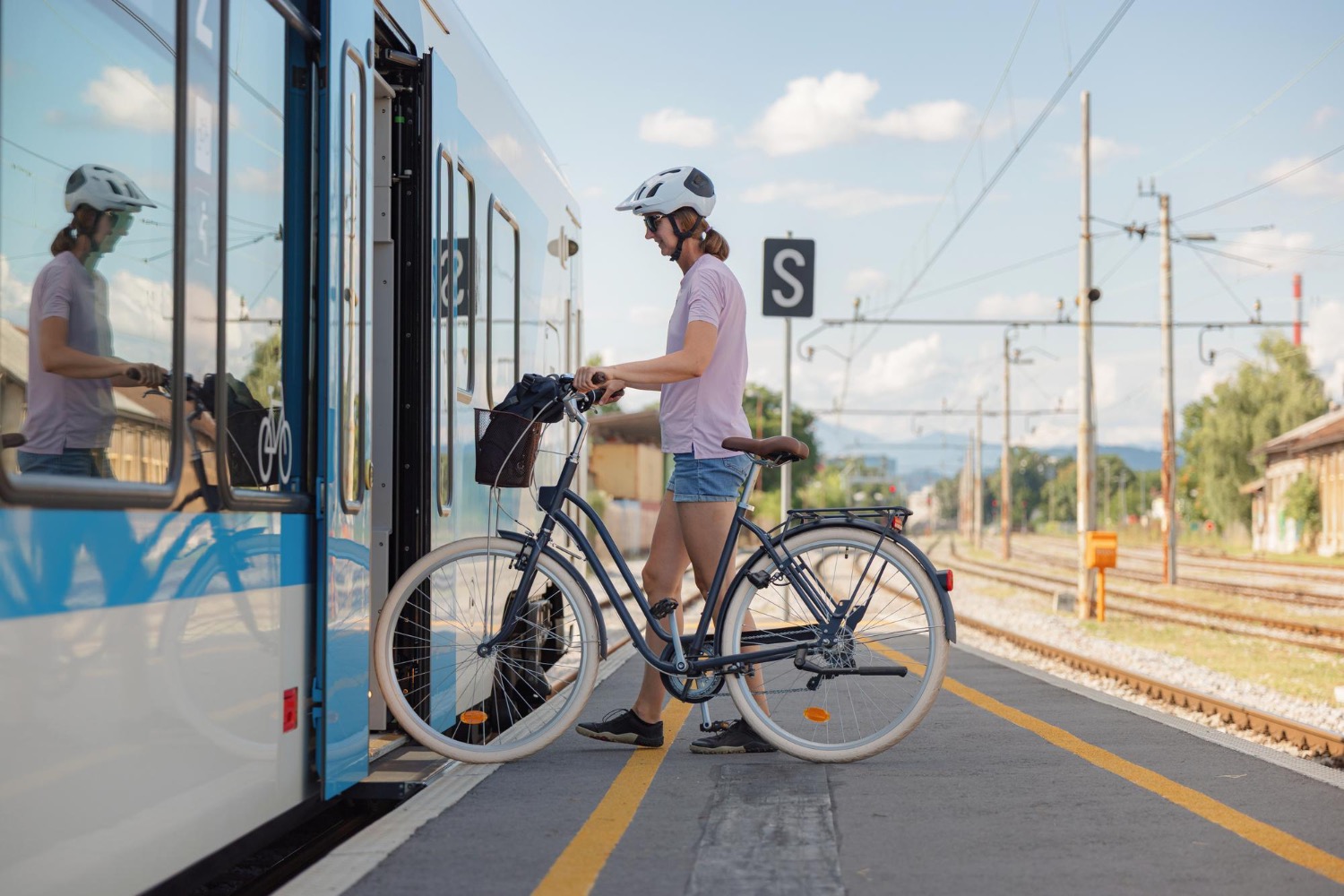With increasing city-based populations occurring in countries such as the US (89% of the US population is projected to live in urban areas by 2050), access to urban services is in higher demand, placing further strain on our Public Transport systems.
Based on this trend, it is clear that a reshaping of urban mobility is needed to combat the growing population, and here we walk you through just what this entails. Here we will explain exactly what this means, including:
- What is Urban Mobility
- Why is Urban Mobility Important?
- What’s a Sustainable Urban Mobility Plan (SUMP)?
- Key Components of a Sustainable Urban Mobility Plan
- What Are the Major Trends in Urban Mobility?
- What is the Future of Urban Mobility?
- Learn More About Urban Mobility
- FAQs
“Urban mobility is no longer just about moving people around by motorised vehicles. What people really need is the accessibility to various urban services.” - The World Bank, 2015
Urban mobility refers to the movement of people, goods, and services within urban areas, facilitated by transportation systems, shared modes of transportation, walking networks, and technology-enabled solutions.
According to The World Bank, urban mobility was traditionally about “moving people from one location to another location within or between urban areas”.
This notion was based on two principles: people needed to access housing, jobs and other urban services such as education and entertainment, and they displayed a preference for motorised mobility due to its cost efficiency.
But in recent years, there has been a shift in these perspectives in the minds of Transit Agencies and local governments who now recognise that online services limit a person’s need for transport.
“Urban mobility is no longer just about moving people around by motorised vehicles. What people really need is the accessibility to various urban services.” - The World Bank, 2015
This is where advancements in urban mobility, such as Demand-Responsive Transport and microtransit, have the potential to lead, reshaping the way we travel as we know it.

Why is Urban Mobility Important?
Urban mobility plays a central role in shaping how communities function, influencing access, economic participation, and the overall efficiency of transportation systems.
As cities grow, mobility has become a key consideration in sustainable planning, ensuring that people and goods can move reliably in a way that supports environmental and social goals.
First and foremost, urban mobility is crucial to the functioning of our society. It’s the gateway to our everyday lives, allowing us to access housing, jobs and urban services. Although online services have reduced some of the necessity placed on transport within the urban mobility landscape, they haven’t completely eradicated it. It has simply challenged it to evolve with the new demands.
Urban mobility supports population growth, allowing growing communities to continue to access services in an efficient and timely manner. Traffic congestion and an increased demand for Public Transport are some of the key implications of an expanding population.
Such implications can be remedied by an alteration of urban mobility as it currently stands, moving towards new means of supplying transport that extend beyond traditional modes, such as private car ownership and Public Transport.
Urban development requires sustainable and efficient mobility options and services that are constantly evolving in line with society. And this can’t be executed without a Sustainable Urban Mobility Plan.
What’s a Sustainable Urban Mobility Plan (SUMP)?
A Sustainable Urban Mobility Plan (SUMP) provides a structured and long-term view of how a city intends to manage movement, reduce emissions, and improve accessibility for residents.
SUMPs guide planning decisions and ensure that transport strategies align with broader policy goals such as sustainability, inclusion, and resilience.
According to Eltis, a Europe-based observatory on urban mobility, a Sustainable Urban Mobility Plan is “a strategic plan designed to satisfy the mobility needs of people and businesses in cities and their surroundings for a better quality of life”.
There are a number of criteria that Eltis illustrates as essential to developing such a plan, and these all enable the provision of urban mobility options that promote access to safe and efficient modes of transport, are cost-effective and improve the impact of transport on the environment.
Why Do Cities Need a SUMP?
Cities rely on SUMPs to coordinate decision-making across departments, create integrated goals, and manage competing demands on limited infrastructure.
By using SUMPs, local authorities can build a shared view of future mobility, addressing challenges such as congestion, sustainability, and equitable access.
How Do SUMPs Improve Environmental Outcomes?
Environmental outcomes are strengthened through measures that prioritise cleaner modes, improve energy efficiency, and reduce reliance on single-occupancy vehicles.
SUMPs promote modal shift, emissions reduction, and long-term climate resilience through targeted planning and measurable actions.

Key Components of a Sustainable Urban Mobility Plan
A well-designed SUMP includes several core components that guide the transition towards a more sustainable and efficient transport environment.
These elements ensure that planning is inclusive, data-driven, and aligned with environmental and social objectives.
Stakeholder Participation and Public Engagement
Engaging residents, businesses, operators, and community groups is essential for ensuring mobility solutions reflect real needs.
Public engagement helps cities understand barriers to access and supports collaborative decision-making.
Integration of Different Transport Modes
Effective SUMPs promote seamless journeys by coordinating infrastructure and services across walking, cycling, public transport, and shared mobility.
Integrated systems create more reliable and efficient movement across urban areas. Explore how flexible services support these networks in our guide on DRT in urban areas.
Smart Mobility and Data-Driven Planning
Data-driven planning supports better decision-making by providing visibility into travel patterns, peak demand, and system performance.
Learn more about technology-enabled mobility in our resource on smart mobility.
Environmental and Social Sustainability Goals
SUMPs set clear sustainability objectives, focusing on emissions reduction, inclusive access, and safer travel environments.
These goals help cities design transport systems that support broad community outcomes.
What Are the Major Trends in Urban Mobility?
Urban mobility continues to evolve in response to technological innovation, environmental targets, and shifting passenger expectations.
The following trends outline how shared models and adaptive systems are shaping the next decade of transport.
We’ve arrived at an age when tech is starting to meet the futuristic dreams we had around transport.
E-vehicles or self-driving cars have become a reality, and advanced communications have even offered us the opportunity to communicate between cars. But the major trends surrounding urban mobility, at least in the near future, are focused towards Demand-Responsive Transport and microtransit.
While transport is looking to become more electric, the issue of traffic congestion as a result of the growing population still remains. We simply don’t have enough infrastructure to support the number of vehicles on our roads.
According to BMW, “up to 40% of total inner-city traffic is accounted for by those searching for a parking space”.
Demand Responsive Transport
Demand-Responsive Transport offers flexible mobility that adapts to real-time passenger needs, utilising dynamic routing and shared capacity to reduce congestion. To explore operational models, visit our demand responsive transport solution.
Demand-Responsive Transport and microtransit technologies have the potential to remedy this issue by tackling the problem at its source. Both of these models rely on a shared transit model, which significantly reduces the number of cars travelling on our roads.
Microtransit
Microtransit offers a flexible middle ground between private vehicles and fixed-route public transportation, enhancing connectivity in areas underserved by traditional networks.
When it comes to Demand-Responsive Transport, passengers have the opportunity to book their trip via a software platform that supports dynamic routing. This means that as soon as a new passenger registers, the journey is recalculated to provide the most efficient means of getting each traveller to their destination. It’s removing the fixed-route model of traditional Public Transport to prevent unnecessary stops and long transit times.
Microtransit goes one step further. While it does adopt the same ridesharing model as Demand-Responsive Transport, it exists as a middle ground between private car ownership and Public Transport.
Microtransit offers the same on-demand technology, but with fewer passengers on board.

What is the Future of Urban Mobility?
The future of mobility is shaped by multimodal networks, integrated digital platforms, and a societal shift away from individual vehicle ownership.
These changes reflect broader trends towards environmental sustainability and transport efficiency.
With the United Nations predicting that 68% of the world’s population will be living in urban areas by 2050, urban mobility as we know it will be in need of a drastic change.
According to Forbes, much of the future of urban mobility is already underway in our cities, with options such as ridesharing and electric scooters existing within our road infrastructure. But they predict that commuters will be looking towards a more varied transit experience found in multimodal transport.
“The fact is that in today’s world, it’s no longer about the underlying physical vehicle. Instead, it’s primarily about overall access and availability, with people seeking a more efficient and integrated experience”.
Multimodal transport allows travellers the opportunity to utilise a number of traditional transit modes, such as buses, trams, trains, ferries or cars, within a single trip.
Multimodal Transport is the Default for Commuters
Multimodal journeys will become standard as cities integrate walking networks, shared mobility, and public transport into cohesive systems that prioritise convenience and efficiency.
MaaS and Integrated Mobility Platforms
Mobility-as-a-Service platforms unify route planning, booking, and payment across multiple modes, giving travellers a streamlined experience. Explore this ecosystem in our article on urban transportation.
The Move from vehicle ownership to mobility services
Shared mobility services are enabling a shift away from private vehicle ownership, driven by cost savings, urban space limitations, and environmental priorities.
Learn More About Urban Mobility
To explore sustainable approaches and long-term mobility strategies, visit our resource on sustainable transport or reach out to our team via contact us.

FAQs
What are the best practices in urban mobility management?
Best practices include integrated planning, coordinated modes, evidence-based decision-making, and prioritisation of sustainable travel behaviours across urban systems.
What role does technology play in improving urban transport?
Technology provides the foundation for data-driven operations, improved reliability, and more adaptive service models, supporting efficient and responsive networks.
How can urban mobility initiatives be more sustainable?
Sustainability relies on promoting low-emission modes, improving accessibility, and supporting long-term transport resilience through inclusive and environmentally focused planning.
%20(1).jpg)
